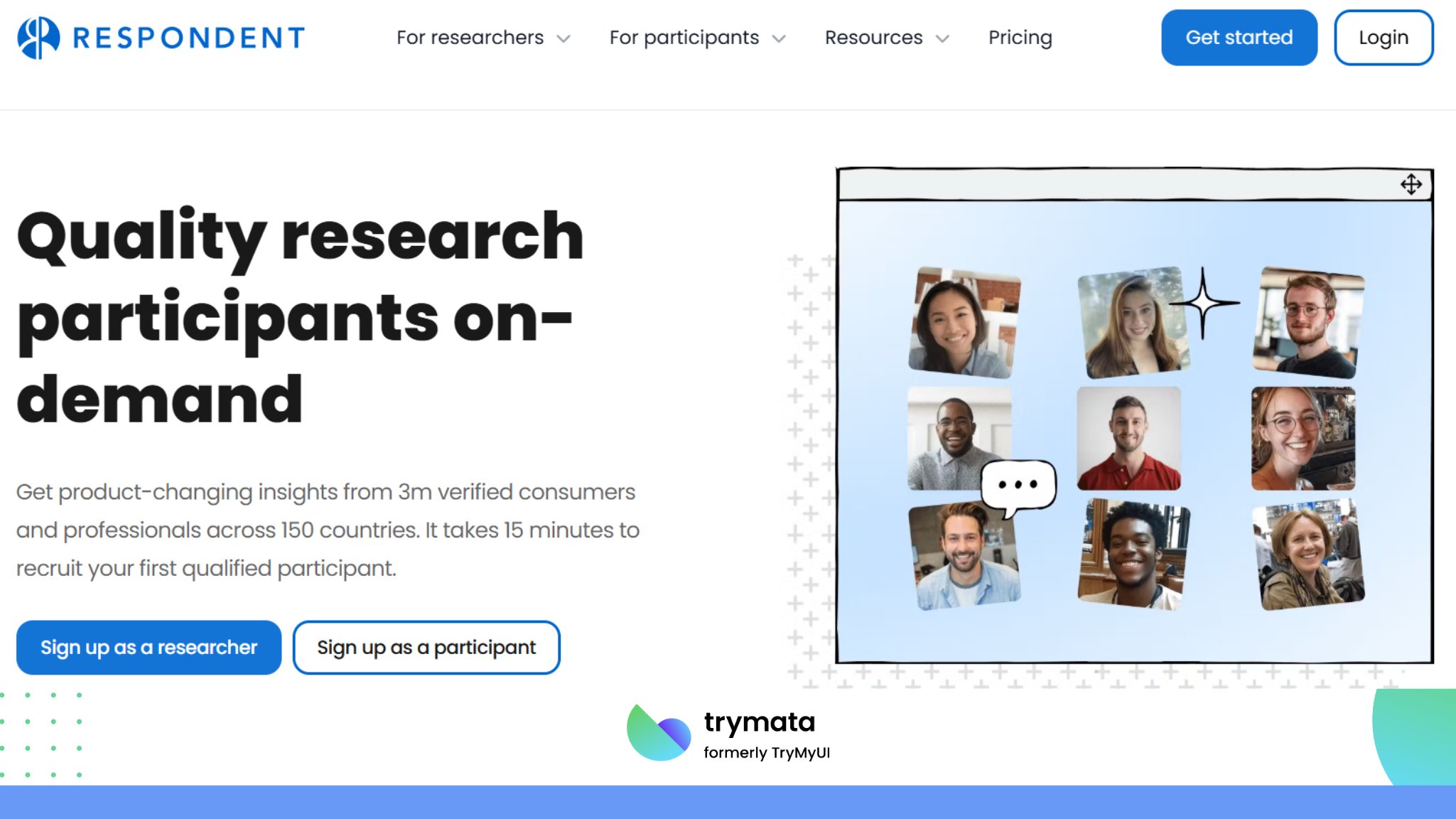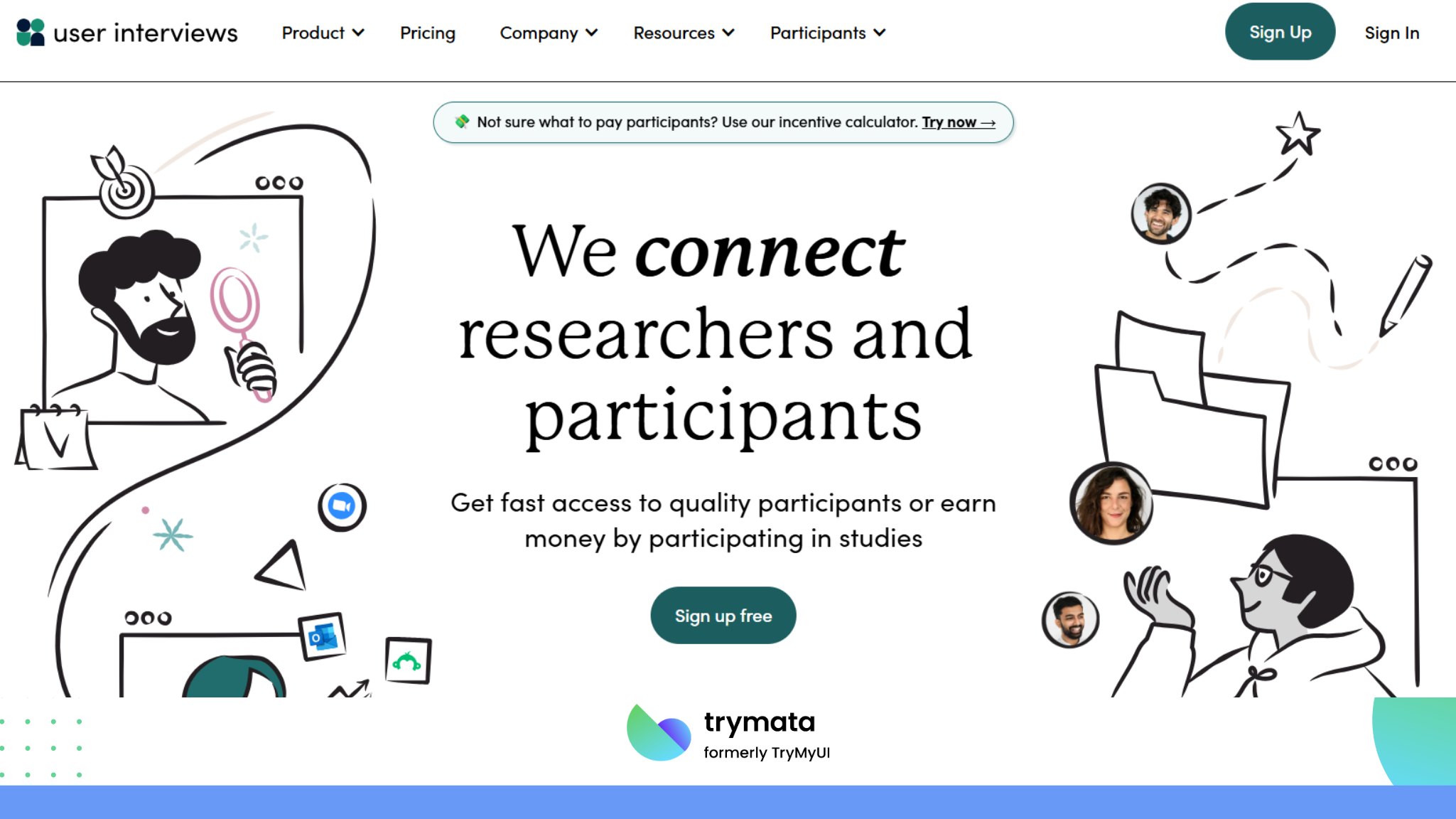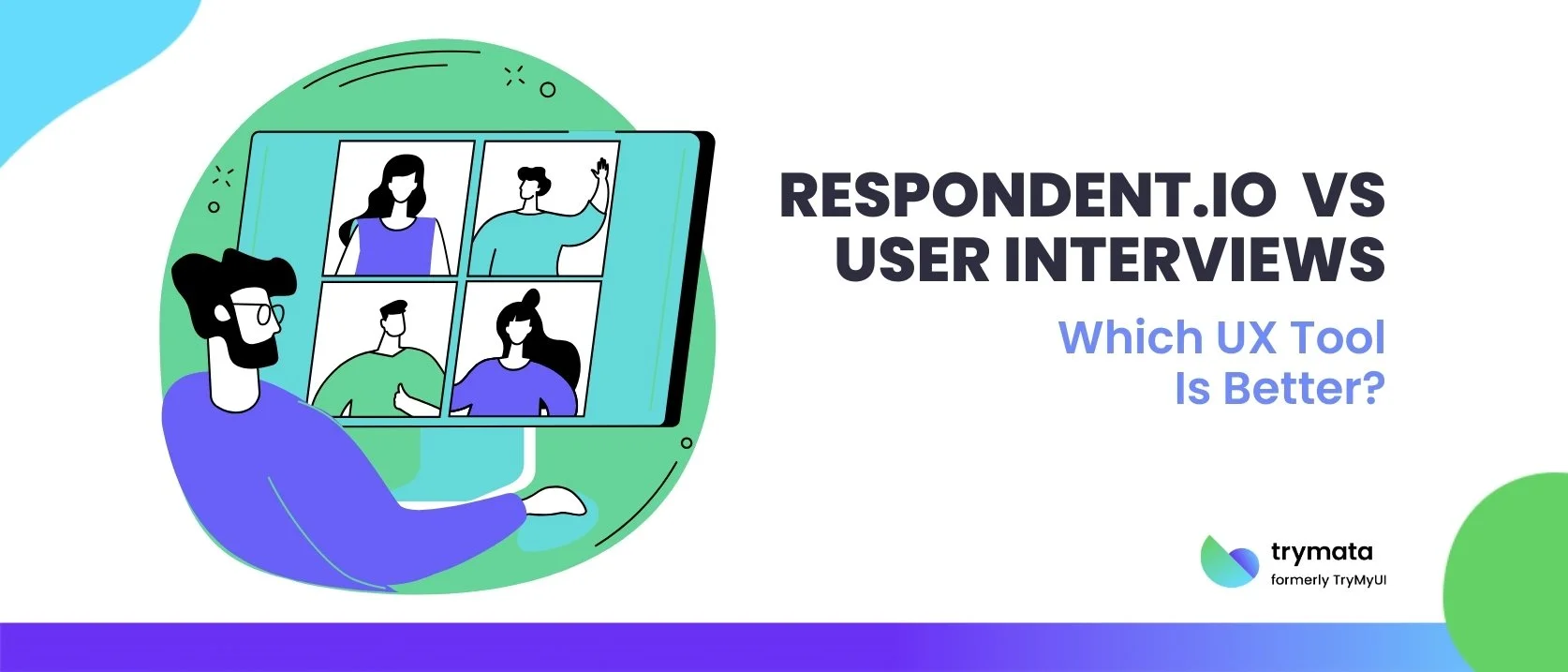Running a usability test without the right participants is like building a beautiful website no one ever visits. You might have the best research study lined up, but your insights won’t mean much if you’re not recruiting participants who reflect your target audience.
That’s why participant recruitment is such a critical step in user research. Whether you’re testing apps, a new product feature, or a brand redesign, finding quality participants who can give you meaningful feedback is essential.
Two popular tools in this space, Respondent.io vs. User Interviews, offer different approaches to solving this challenge. Let’s examine each platform, how it supports usability testing, and when one might work better.
How is Respondent.io?
Respondent.io is designed with professionals in mind. Think B2B companies, SaaS platforms, or businesses building tools for marketers, developers, product managers, or executives. It’s built to help you recruit from a highly specialized panel.
If your research study involves niche roles or you seek feedback from participants with higher income levels and industry experience, Respondent.io is a strong contender.

Highlights:
- Participants are verified via LinkedIn or work email.
- Popular among companies conducting expert interviews.
- Excellent for targeted B2B usability testing.
Pros:
- High-quality, job-specific participants.
- Fast recruitment with a built-in panel.
- Positive reviews for vetting and screening rigor.
Cons:
- 50% service fee added to every paid session.
- Not ideal for broad or consumer-focused studies.
- Limited support for unmoderated tasks or inviting your users.
Best For:
High-level feedback on B2B tools, enterprise platforms, or deep-dive interviews with decision-makers.
How is User Interviews?
UX researchers love User Interviews because they’re flexible, easy to use, and built with usability testing in mind. Whether you’re running moderated sessions, diary studies, or unmoderated tasks, this platform helps you recruit fast and manage everything from screeners to payments.

Highlights:
- Huge participant pool, including both professionals and general consumers.
- Ability to invite own users or recruit new ones.
- Smooth coordination with scheduling, messaging, and screener surveys.
Pros:
- Powerful tools for filtering and customizing participant criteria.
- Built-in workflows for reminders, communication, and incentives.
- More affordable than Respondent.io, with a 25–35% service fee.
Cons:
- You should review and screen more people to find the best fit.
- Some sessions may see schedule changes or drop-offs.
Best For:
End-to-end usability testing, especially for digital products, consumer apps, or iterative research projects.
Side-by-Side Comparison: Respondent.io vs. User Interviews
Are you trying to decide which platform best suits your usability testing needs? Here’s a quick breakdown of features, strengths, and ideal use cases so you can pick the best option for your next research study.
| Feature | Respondent.io | User Interviews |
| Audience Type | B2B professionals | General consumers + pros |
| Use Case | Expert interviews, niche UX | All types of usability testing |
| Invite Own Users | No | Yes |
| Payment Structure | 50% service fee | 25–35% service fee |
| Scheduling Tools | Yes | Yes |
| Unmoderated Support | Limited | Available |
| Positive Reviews | For expert sourcing | For ease of use and flexibility |
| Recruitment Speed | 1–3 days | Same day possible |
Trymata: A Leaner Alternative for Quick, Insightful UX Tests
Formerly known as TryMyUI, Trymata takes a different approach. It combines recruitment, testing, and analysis into a single platform. If you want to launch a test without juggling tools, Trymata lets you set up a usability study, assign tasks, and watch recorded sessions in one place.
Participants are recruited from Trymata’s panel, or you can invite your users. The platform guides users through your test, records their screens and voices, and captures their responses to follow-up questions.

Strengths:
- No need for external scheduling or coordinator tools.
- Automatically collects feedback, voice commentary, and usage data.
- Cost-effective for frequent or unmoderated testing.
Considerations:
- The panel isn’t as deep for specialized or B2B audiences.
- Best suited for unmoderated tests; not optimized for live interviews.
Best for:
Teams who want a plug-and-play usability testing tool with minimal manual setup and rich insights.
Which One Should You Choose?
Here’s the simple truth: there’s no one-size-fits-all answer. Let’s find out Respondent.io vs. User Interviews vs Trymata:
- Use Respondent.io if you’re running deep-dive interviews with professionals and need to recruit participants in specific job roles.
- Choose User Interviews if you want a customizable and scalable recruitment platform that plays well with other tools and supports a variety of research studies.
- Go with Trymata if you’re testing a website or app and want a self-contained platform that captures feedback, input, and behavior all in one process.
You might even use two of them together: recruit with User Interviews and then test on Trymata. Or invite your own users to both platforms and compare responses across tools.
Conclusion
Whether you’re a solo UX designer or part of a larger team, choosing the right participant recruitment platform is essential. It impacts everything from the quality of your data to the clarity of your insights and even how your brand is perceived during the research process.
Respondent.io vs. User Interviews both help you find the right people to talk to. But if you’re looking for something a bit more streamlined, Trymata could be the way to go. It lets you recruit, run tests, and gather feedback all in one spot, so you’re not bouncing between platforms.
It’s especially useful for quick, unmoderated studies where you need insights quickly without a lot of setup. Ultimately, it’s less about which tool is “best” and more about which one suits your current project. Sometimes, keeping it simple is just what you need.
50 Qualitative Interview Questions for UX Research & Testing




